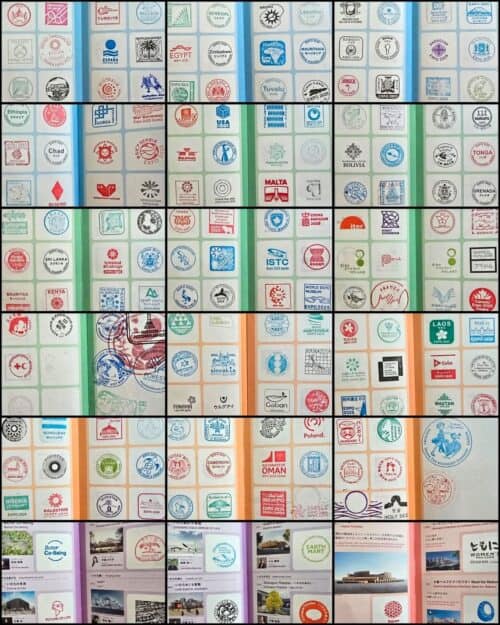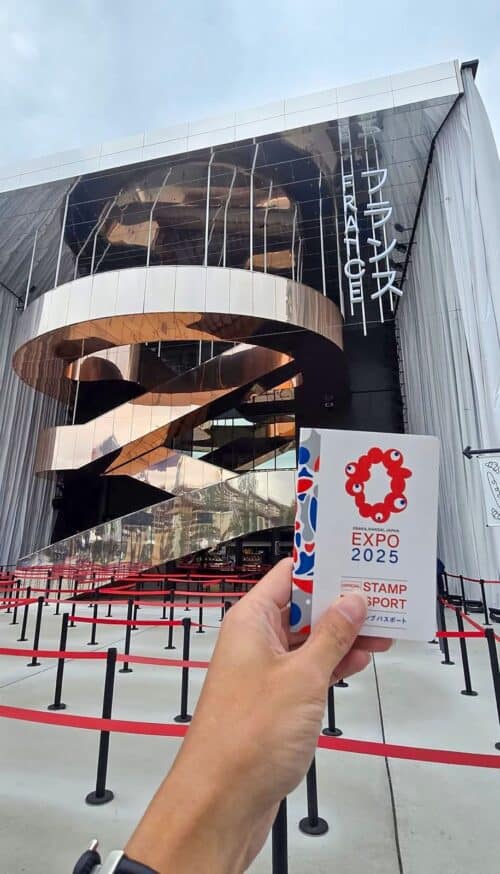A PENANG delegate who attended the Osaka World Expo walked an astounding 40,000 steps a day over eight days — all in his quest to visit every one of the event’s 188 pavilions in Kansai.
Baylon Tham, who represented a Penang-based fashion collective, described the experience as both exhausting and eye-opening. Along the way, he managed to collect stamps (chops) from the different pavilions he visited.
“We started queuing as early as 7am, even though the gates only opened at 9am. It was tiring but an unforgettable experience of a lifetime,” Tham told Buletin Mutiara in a recent interview.


Tham described the expo as unlike anything he had ever seen before.
Organised and sanctioned by the Bureau International des Expositions (BIE), the event was held from April 13 to Oct 13 this year.
According to Tham, daily attendance at the expo surged to about 200,000 visitors by mid-October, with locals making up nearly 80 per cent of the crowd.
“It’s hard to imagine so many people gathering in one place every day,” said Tham, describing the atmosphere as vibrant and packed from morning till night.
He noted that although the expo’s mascot, Myaku-Myaku (a mysterious creature born from the fusion of cells and water), initially drew mixed reactions, public sentiment later turned positive as visitor numbers soared.
Tham also serves as director of the Penang Green Council (PGC), advisor to the Penang Island City Council (MBPP), and past chairman of the Malaysia Green Building Council Northern Chapter.
Held on Yumeshimanaka Island, the Osaka World Expo featured 188 pavilions representing 152 countries and international organisations.

Tham shared that pavilions such as those of the United States and France saw queue times stretch up to five hours daily, while the Italy, Canada, and Netherlands pavilions were also among the most visited.
He described the Louis Vuitton (LV) showcase at the France Pavilion as one of the most fascinating experiences he encountered.
Malaysia’s pavilion, themed “Weaving a Future in Harmony,” drew between 10,000 and 20,000 visitors daily.
“Its centrepiece — a towering Tree of Life installation — symbolised Malaysia’s multicultural harmony and biodiversity. The exhibit also featured interactive elements highlighting the nation’s commitment to sustainability and innovation,” Tham said.

Tham described one of the biggest hits among visitors was a live roti canai demonstration by Malaysian chefs, where the popular delicacy was sold for RM50 apiece.
“Despite the hefty price tag, the roti canai became one of the expo’s culinary highlights, selling an average of 5,000 pieces daily. The queue was long every day. The people were amazed by how it was flipped and cooked right before their eyes,” Tham said.
He added that Malaysia’s pavilion, with its cultural street concept and live performances by ethnic troupes from Sabah and Sarawak, gave foreign visitors a vivid glimpse of the country’s multicultural diversity.
“Our pavilion reflected Malaysia’s harmony and diversity, something that truly sets us apart in Asia,” he said, noting that many Japanese visitors found it “very cultural and full of warmth.”
Tham said the expo also illustrated how each nation projected its future direction.
“Thailand’s pavilion was fascinating. They not only focused on medical tourism but also developed and exported surgical equipment and healthcare machinery. They successfully combined traditional Thai medicine with modern pharmaceutical research,” he said.
Singapore’s pavilion carried a strong sustainability message through its immersive 360-degree ‘urban garden’ concept, simulating a futuristic city in harmony with nature.
Meanwhile, China’s pavilion offered a deep cultural journey, blending ancient civilisation with future technology, while the United States pavilion took visitors on a cinematic journey into space, showcasing the country’s achievements in science and exploration.
“You felt as if you were sitting inside a rocket during launch. The visuals showed Earth shrinking as you entered orbit. It was thrilling and humbling,” Tham recalled, adding that the display even featured an authentic moon rock from NASA’s Apollo mission.

He described Japan’s main pavilion as “spectacular,” calling its massive circular structure the largest wooden building ever constructed in human history.
“It’s about five to six storeys high, and visitors can walk to the top to enjoy a panoramic view of the entire expo site,” said Tham.
The International Red Cross Pavilion, he added, left one of the strongest emotional impacts with its heart-wrenching exhibits and real-life stories.
Despite the unpredictable autumn weather, Tham said the experience was beyond worthwhile.
“The weather could change from sunny to heavy rain within minutes, and sometimes temperatures dropped below 20°C at night,” he said.
Throughout his eight days in Osaka, Tham successfully visited every single pavilion on the expo grounds.
“It took about 40,000 steps a day. I used my smartwatch to track it, and by the end of the trip, I felt like I’d completed a marathon,” he said beamingly.



Story by Edmund Lee
Pix by Siew Chia En

